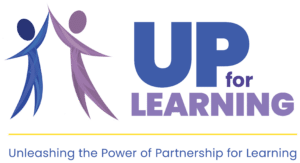Each year students in elementary schools across Orleans Southwest Supervisory Union (OSSU) take a school climate survey. The survey asks students to rate statements such as “I feel safe at school” or “I get along with other students” from 1 (no, never) to 5 (yes, always). These last two years were no different, and beginning in late fall students opened Chromebooks or used old-fashioned pencil and paper to add in their responses. What was different these last two years was that 5th and 6th grade youth in these schools were given the opportunity to analyze their school’s data and take action based on their findings. The UP for Learning program “Personal Power and Community Connections” (P2C2) is designed for middle grade learners, and guides youth and their adult partners to create positive change in their communities. I have the honor of partnering with school counselors and teachers in these schools in Northern Vermont to facilitate this work. Here are a few takeaways I am reflecting on during this second year:
Takeaway #1: Analyzing survey data is a meaningful way to integrate math, humanities and social-emotional skills. Without fail, these students ask “Can we look at the data now!?” as we review directions and discuss the process. Together students look at the graphs, ask questions about how to read them, and notice their own reactions in comparison to what the data says. This process is engaging even to the most data-averse among us!
Takeaway #2: Fifth and 6th grade students are eager for leadership opportunities! By the time they reach the upper end of their elementary years, 5th and 6th grade students in K-6 elementary schools have gained innumerable skills that younger students they sit on the bus and walk the halls with have yet to practice. Many classes choose to visit younger classes and share their analysis and action work as part of their process. By engaging in intentional community building, practicing emerging facilitation skills, and taking ownership over their own climate data, these young people begin to see themselves as the leaders that they are.
Takeaway #3: Purchasing more playground equipment is always a good idea. As part of their analysis journey, each class identifies strengths and concerns in their climate data, then brainstorms actions to celebrate the strengths and address the concerns. The action ideas that come up run the gamut from sparkle jars to quiet music during independent work time to posters expressing appreciation for the adults who work at the school. One recurring theme is that many students would like more options for playground equipment during recess. This idea emerges regularly as a way to either solve disagreements over the lack of options available or as a celebration of how connected and safe students feel at school. Fifth and 6th grade students are focused on concrete, clear solutions, and it’s one of the reasons I enjoy facilitating this program so much!
As a former elementary school educator, I treasure these opportunities to work with middle grade learners and their adult partners. I continue to learn from their perspectives and appreciate the relationships we have created. It gives me hope to think of a future where more of us can access our own agency, prioritize connection and community, and remember that having a few more soccer balls to share with your friends is a good choice every time.
By Jackie Verley, UP for Learning Program Director

